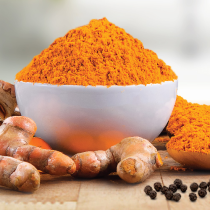Diabetes continues to rise dramatically each year. The International Diabetes Federation reported that 1 in 11 (463 million) adults aged 20-79 years worldwide were living with diabetes in 2019. It is estimated to increase to 700 million by 2045. 1 in 2 (232 million) people with diabetes were undiagnosed. It caused an estimated 4.2 million deaths.
Closer to home, it is reported that Malaysia has the highest rate of diabetes in Asia in 2018. About 1 in 5 Malaysian adults have been diagnosed with the disease. The recent National Health and Morbidity Survey (NHMS) 2019 showed that an estimated 3.9 million Malaysians aged 18 and above are suffering from diabetes.
What is diabetes?
During digestion, carbohydrates are broken down into glucose, which can be transported across the intestinal wall into the bloodstream. Raised sugar levels trigger your pancreatic cells to release insulin. Insulin promotes the uptake of glucose into body cells so it can be used as fuel for energy. As glucose moves from the bloodstream into the cells, blood sugar levels begin to fall.
Diabetes is a chronic condition characterised by elevated blood sugar levels in the body. Type-1 diabetes is a condition in which the pancreas either does not produce insulin at all or does not make enough insulin. In type-2 diabetes, the pancreas either does not produce enough insulin, or the cells in the body fail to respond to the signal of insulin – a condition known as insulin resistance. As a result, blood sugar builds up in the bloodstream.
Are you at risk?
Type-2 diabetes is the most common type of diabetes, accounting for at least 90% of all cases. It usually occurs in adults over 40 years old and who are overweight. However, there are increasing numbers of young people being diagnosed with type-2 diabetes.
Many factors can increase your risk of diabetes. You have a higher chance of developing it as you:
- Get older (over 45 years old)
- Have a family history of diabetes
- Are overweight
- Physically inactive
Diabetes is highly fatal. It can lead to several life-threatening complications such as:
- Heart attack
- Stroke
- Kidney failure
- Nerve damage
- Blindness
- Lower-limb amputation
Watch out for the following symptoms of type-2 diabetes. The symptoms may be so mild that you do not notice them. It is therefore important to get your blood sugar checked regularly and monitored closely so that it will not swing out of control.
- Unusual thirst
- Frequent urination
- Unexplained weight gain or loss
- Numbness or tingling in the hands and feet
- Blurred vision
- Slow wound healing
- Extreme fatigue
Controlling sugar levels
Currently, there is no known cure for diabetes, but with positive lifestyle modifications, you can prevent or delay the onset of type-2 diabetes. With these steps, you can lower your risk of this deadly disease and the complications it brings.
- Keep a healthy weight
- Eat a healthy diet
- Exercise more
- Quit smoking
A number of herbs and spices offer natural alternatives to help control blood sugar levels. These noteworthy plant-based remedies include:

Fenugreek seeds are high in soluble fibre, which helps prevent blood sugar spikes by slowing down the digestion and absorption of carbohydrates. Fenulife is a good source of concentrated, odour-free fenugreek extract which provides 3 times more galactomannan soluble fibre than whole fenugreek seeds. The seeds also help reduce insulin resistance and HDL-cholesterol levels.

Cinnamon contains a water-soluble polyphenol compound called methyl hydroxy chalcone polymer (MHCP), which is able to mimic insulin, increasing the uptake of blood sugar by cells.

Bitter melon shows hypoglycemic effects via the regeneration of the pancreatic beta cells and stimulation of insulin secretion.

Gymnema sylvestre is also known as a “destroyer of sugar” for its ability to suppress cravings for sweet food. This helps prevent excessive intake of sugar.

Turmeric has potent antioxidant and anti-inflammatory properties which help manage blood sugar levels and play a defensive role against oxidative stress caused by diabetes.

Corosolic acid in banaba leaf helps keep the blood sugar levels within normal levels by improving the cellular uptake of glucose.












